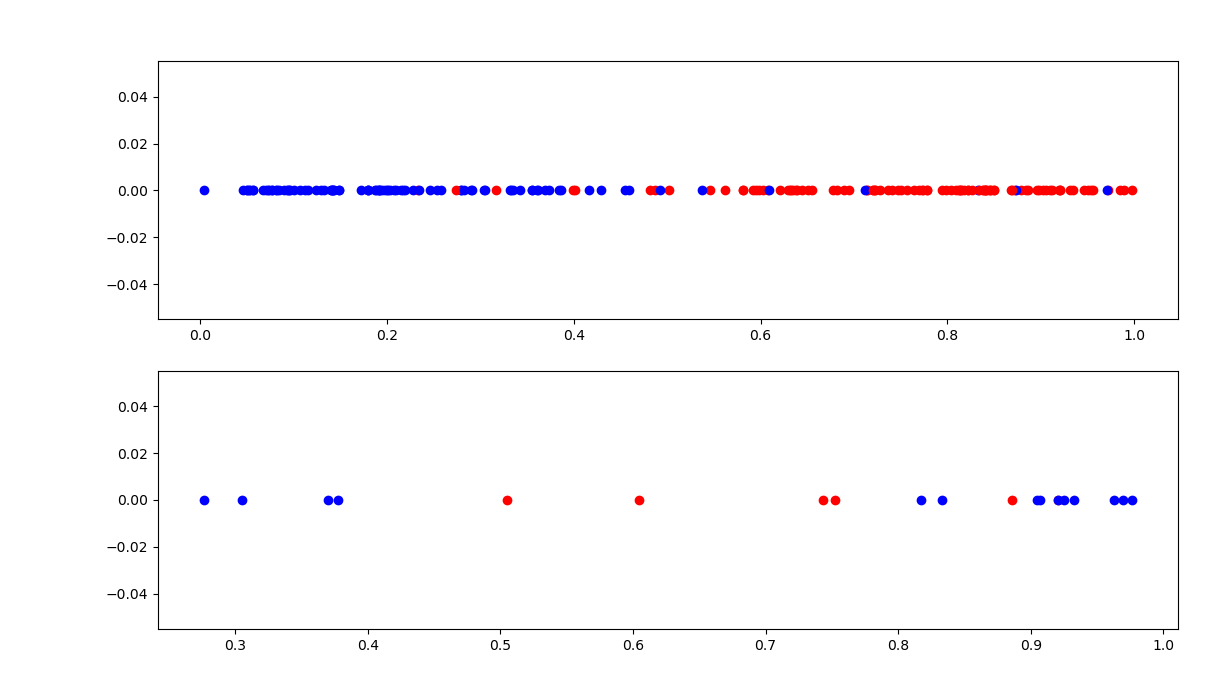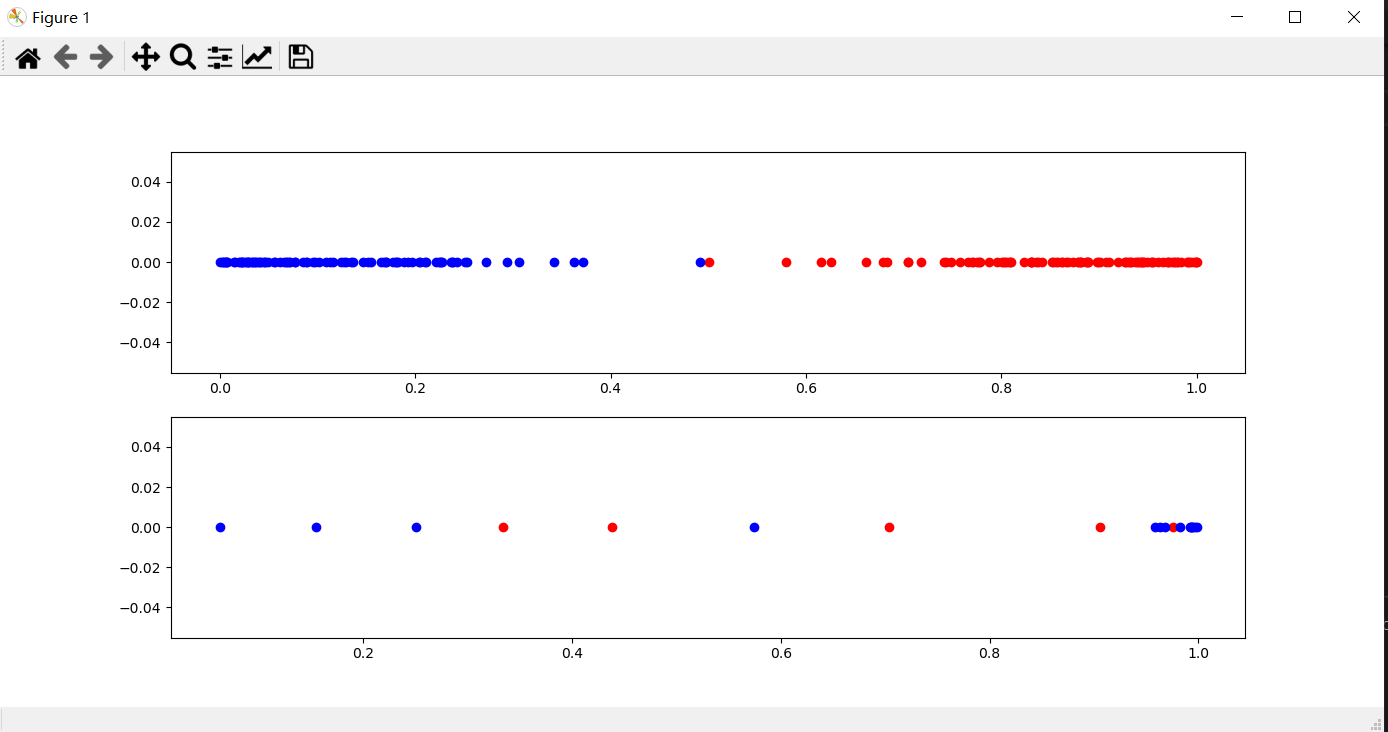用神经网络做运动时序序列。
直接用神经网络处理原数据不对,因为我损失函数是平方损失,全连接层加sigmoid激活函数,神经网络会选择1类指定特征和尽可能大让0类数据的总和尽可能小。运动可能每个人不是同步用神经网络除非有很大的数据集而模型没有。所以不行。
代码
import matplotlib.pyplot as plt
import numpy as np
import pandas as pd
df = pd.read_csv('train.csv')
df=df.drop(['ID'],axis=1)
nmp=df.to_numpy()
feature=nmp[:-20,:-1]
label=nmp[:-20,-1]#(210,240)
test_feature=nmp[-20:,:-1]
test_label=nmp[-20:,-1]#(210,240)
from torch import nn
import torch
loss=nn.MSELoss()
feature=torch.Tensor(feature)
label=torch.Tensor(label)
label=label.reshape(-1,1)
test_feature=torch.Tensor(test_feature)
test_label=torch.Tensor(test_label)
test_label=test_label.reshape(-1,1)
network=nn.Sequential(nn.Linear(240,1),nn.Sigmoid())
import torch.optim as optim
optimizer = optim.Adam(network.parameters(), lr=0.004)
for epoch in range(5000):
optimizer.zero_grad()
out=network(feature)
l=loss(out,label)
l.backward()
optimizer.step()
Y = torch.ge(out, 0.5).float()
acc=Y.eq(label).float().sum()/len(label)
out=network(test_feature)
Y = torch.ge(out, 0.5).float()
test_acc=Y.eq(test_label).float().sum()/len(test_label)
print(epoch,l,acc,test_acc)
if test_acc==0.50 and acc>0.93:
break
ax1 = plt.subplot(2,1,1)
ax2 = plt.subplot(2,1,2)
out=network(feature)
out=out.detach().numpy()
plt.sca(ax1)
for i in range(out.shape[0]):
if label[i]==1:
plt.scatter(out[i],0,color='red')
if label[i]==0:
plt.scatter(out[i],0,color='blue')
out=network(test_feature)
out=out.detach().numpy()
plt.sca(ax2)
for i in range(out.shape[0]):
if test_label[i]==1:
plt.scatter(out[i],0,color='red')
if test_label[i]==0:
plt.scatter(out[i],0,color='blue')
plt.show()


训练集准确率为1的结果。




 浙公网安备 33010602011771号
浙公网安备 33010602011771号